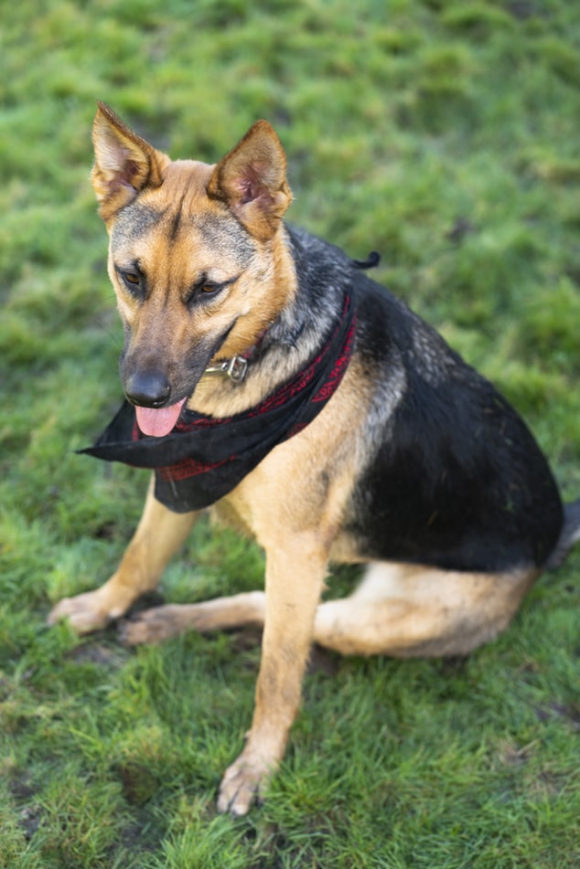


ASK US
My Pet Is Limping, But Not In Pain
I have had the privilege of working in veterinary medicine for the past 20 years and have had the pleasure to work with many wonderful pets and their owners. The majority of my time has been spent working with orthopedic patients. One thing that I have heard time and again is the phrase “My dog is limping, but I don’t think he’s in pain.” This phrase will then typically open up a discussion about pet pain and lameness, which I think is a very important discussion for all owners to have with their veterinary team.
I understand the concept behind these words...your pet is limping, but still wants to play and go for walks. They still greet you happily at the door, are eating well and not acting sad or depressed. Then there is the big one...they haven’t been whining or crying at all. You can touch the leg and move it around without them complaining, so it must not hurt. This is where I tell you that dogs and cats are tougher than we are. Heck, the majority of the animal kingdom is tougher than we are.
If you or I sprain our ankle, we hobble around, ice, elevate the limb and take anti-inflammatory medications. We tear our ACL, we go to the doctor, have surgery and are on crutches. Our hip is dislocated and we can’t walk at all. Any one of these things happen to us and we are sure to tell everyone how much pain we are in. They can see it in our face, in our inability to do things, in the medications we need to take to make life tolerable while we heal. This is where we differ from animals.
In the animal kingdom it is survival of the fittest. The weakest link is taken out of the gene pool. Over time, animals have learned to adapt, tolerate and hide more pain than you and I can because it might mean the difference in their survival. Even through domestication they have retained this toughness. Also, don’t forget the fact that they have twice as many legs as we do, so they can shift weight a bit differently.
Think about an injury to yourself. Do you limp because it is fun and looks cool? No, you limp because it hurts to put pressure on the injured area. Pets are the same, they limp because it hurts. They just don’t say much about it. It takes a pretty sever issue or injury for pet to vocalize, whine or cry due to pain. We often see this with things such as spinal injuries, bad fractures and major traumatic injuries. Other pets might not vocalize because they don’t even know they have a problem.
Think of an issue like hip dysplasia. The pet is born with abnormal conformation to the hip joint(s) and the pain of the issue, along with the arthritis, develops over time. The abnormal condition of the joints and the discomfort is all they have ever known, so to them, the discomfort is normal. It is very common for us to see hip dysplasia as an incidental finding on abdominal x-rays. The pet comes into the clinic for vomiting and diarrhea. While taking x-rays of that area we see the hips on the film and they are full of arthritis and partially dislocated, but the pet is acting normally. The pet has adapted to the gradual development of the disease over time. When mentioning the finding to the owner, they frequently will tell us that the pet has never really liked to jump, is slow to get up sometimes and might not be as active as they used to be, but they just thought it was their age.
Now that we know animals are great pretenders when it comes to pain, what do we do about it? I encourage owners to be proactive about lameness and pain. I’m not saying you have to run to the veterinary clinic every time you see a little mis-step, but be aware of your pet’s normal walking and running patterns. If you see lameness that persists for 3-4 days, the leg looks like it is dangling or they have lameness that worsens after exercise but resolves once they rest and this cycle happens repeatedly, then I encourage you to seek evaluation with your Veterinarian. If we can treat an issue sooner rather than later it means a more comfortable pet, a better prognosis and less development of arthritis. Some lameness issues can also be due to a variety of diseases, not just an injury. So lameness that moves from one leg to another could be a sign of Lymes Disease. Lameness associated with development of a hard lump on the bone could be cancer. I encourage owners of breeds who are susceptible to hip dysplasia to have a hip x-ray taken when your pet is spayed or neutered. The more proactive we can be for our pets means the better quality of life we can provide them. Also, never be hesitant to contact your veterinary professional. After all, we want what’s best for your pet just as much as you do.



